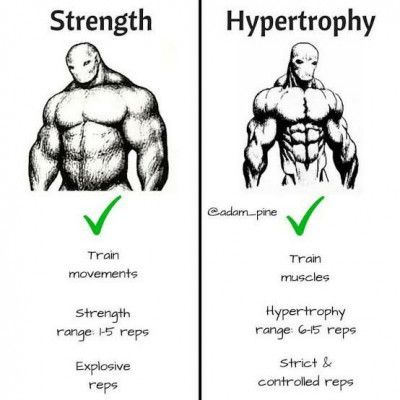
When it comes to building muscle, there is a fascinating science behind the process. One of the key concepts to comprehend is hypertrophy, the physiological mechanism responsible for muscle growth. In this article, we will delve into the intricate details of hypertrophy and uncover how it contributes to the development of strong and defined muscles.
What is Hypertrophy?
Hypertrophy refers to an increase in the size of muscle cells, ultimately leading to muscle growth. It occurs as a result of consistent resistance training, where muscles are continually exposed to tension and stress, causing them to adapt by becoming stronger and larger.
The Two Forms of Hypertrophy
Hypertrophy can be classified into two main types: myofibrillar and sarcoplasmic hypertrophy.
Myofibrillar Hypertrophy
In myofibrillar hypertrophy, the individual muscle fibers increase in size and strength. This type of hypertrophy predominantly occurs under conditions of heavy weightlifting and lower repetition ranges. It is associated with improved force production and is favored by athletes seeking to enhance strength and power.
Sarcoplasmic Hypertrophy
Sarcoplasmic hypertrophy, on the other hand, primarily involves an increase in the volume of sarcoplasm, the fluid within muscle cells. This type of hypertrophy results in a more significant muscle size without necessarily increasing strength proportionally. It is typically achieved through higher repetition ranges and shorter rest periods, often pursued by bodybuilders who aim for aesthetic muscle growth.
The Mechanism of Hypertrophy
Understanding the process of hypertrophy can provide insight into the most effective ways to maximize muscle growth. It involves a complex interplay of biological and molecular events within muscle cells.
Muscle Fiber Activation
During resistance training, the working muscles experience microscopic damage to their fibers. This damage triggers an inflammatory response, leading to the activation of satellite cells, which are crucial for muscle repair and growth.
Protein Synthesis
Following muscle fiber damage, protein synthesis is initiated to repair and rebuild the damaged fibers. This process involves the synthesis of new contractile proteins, such as actin and myosin, which contribute to muscle growth.
Hormonal Factors
Hormones also play a significant role in hypertrophy. Testosterone, insulin-like growth factor 1 (IGF-1), and growth hormone are key hormones that regulate muscle growth. They stimulate protein synthesis, enhance satellite cell activation, and promote overall muscle tissue adaptation.
Training Variables for Hypertrophy
To optimize muscle hypertrophy, implementing the right training variables is vital. Five key factors have been identified:
Progressive Overload
Constantly challenging your muscles by gradually increasing the load, intensity, or volume of your workouts is crucial for continued hypertrophy.
Volume
Training volume refers to the total amount of work performed in a given session, including sets, repetitions, and weight. Higher volume training has been shown to induce greater hypertrophic adaptations.
Frequency
The frequency of your workouts plays a role in hypertrophy. Muscle protein synthesis is elevated for approximately 24-48 hours following resistance training. Therefore, training each muscle group two to three times per week allows for optimal growth.
Exercise Selection
Choosing exercises that target specific muscle groups is vital for hypertrophy. Compound exercises, involving multiple muscle groups, are particularly effective in stimulating overall muscle growth.
Rest and Recovery
Adequate rest and recovery are essential for hypertrophy. Muscles need time to repair and rebuild after intense training sessions. Aim for 48-72 hours of rest between sessions targeting the same muscle group.
Conclusion
Hypertrophy is a fascinating process that occurs through consistent resistance training and understanding the underlying science behind it can empower you to make informed decisions for optimal muscle growth. By incorporating the right training variables and providing sufficient recovery, you can unlock your body’s potential to build strong, defined muscles.

